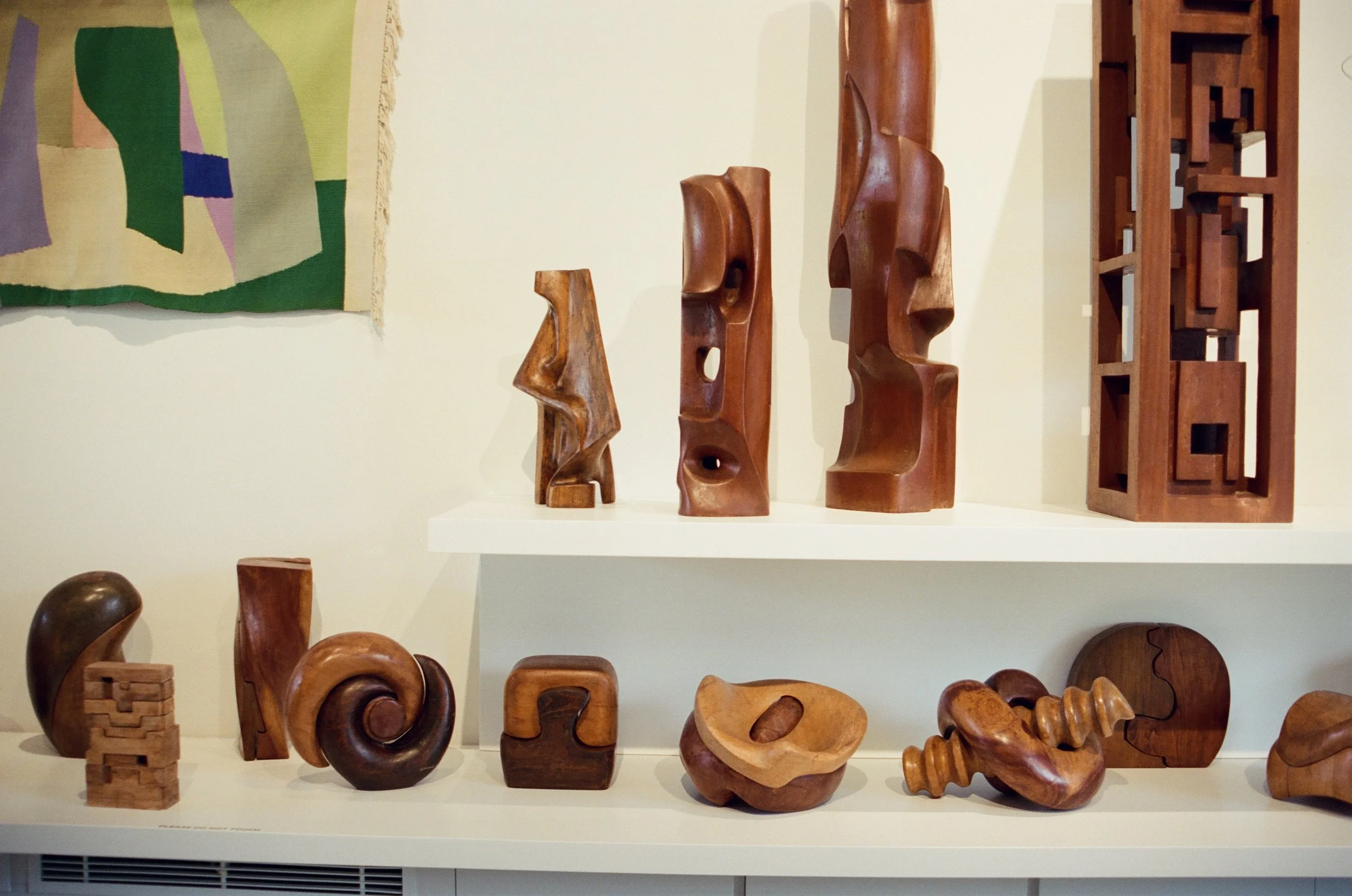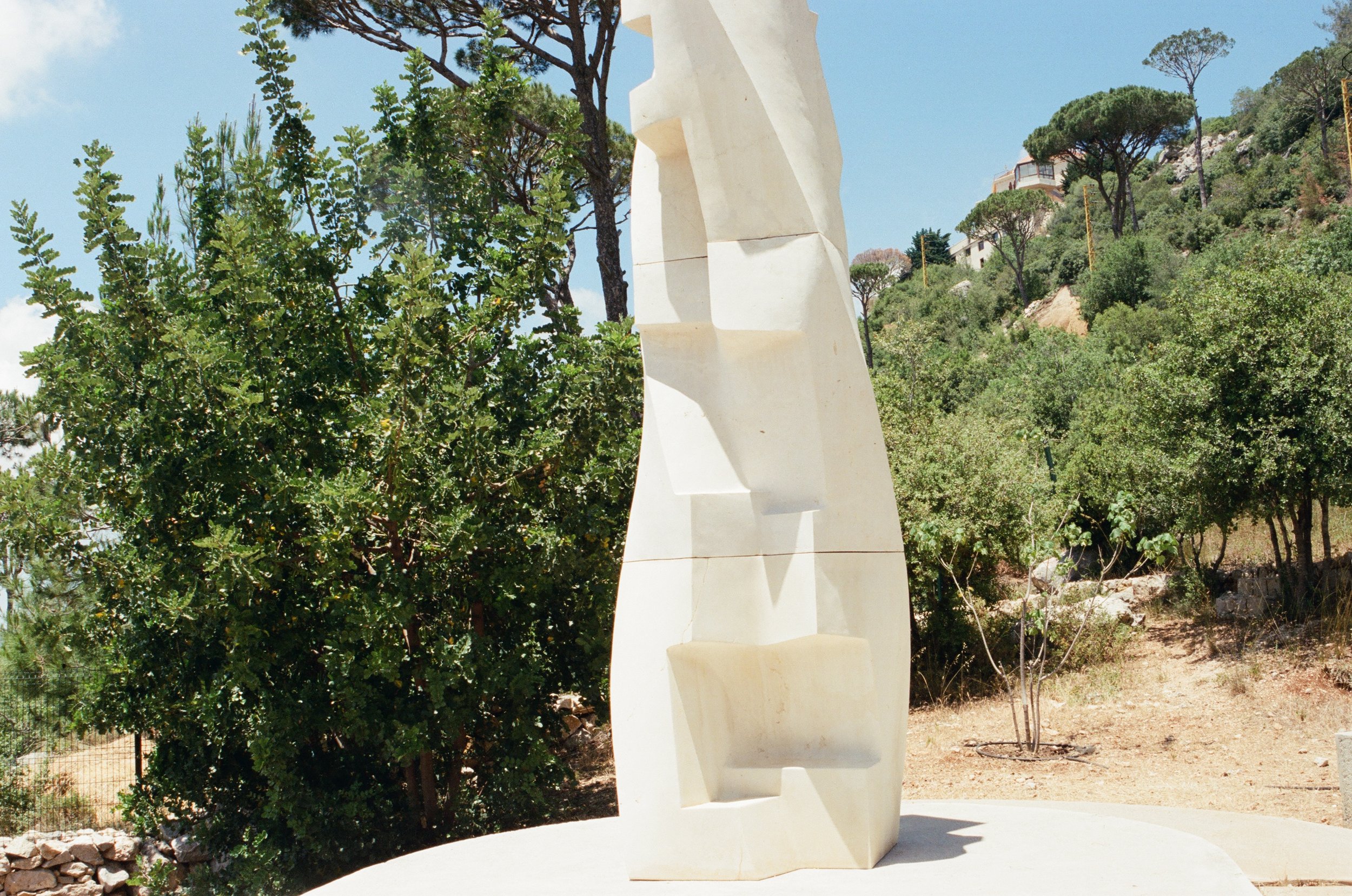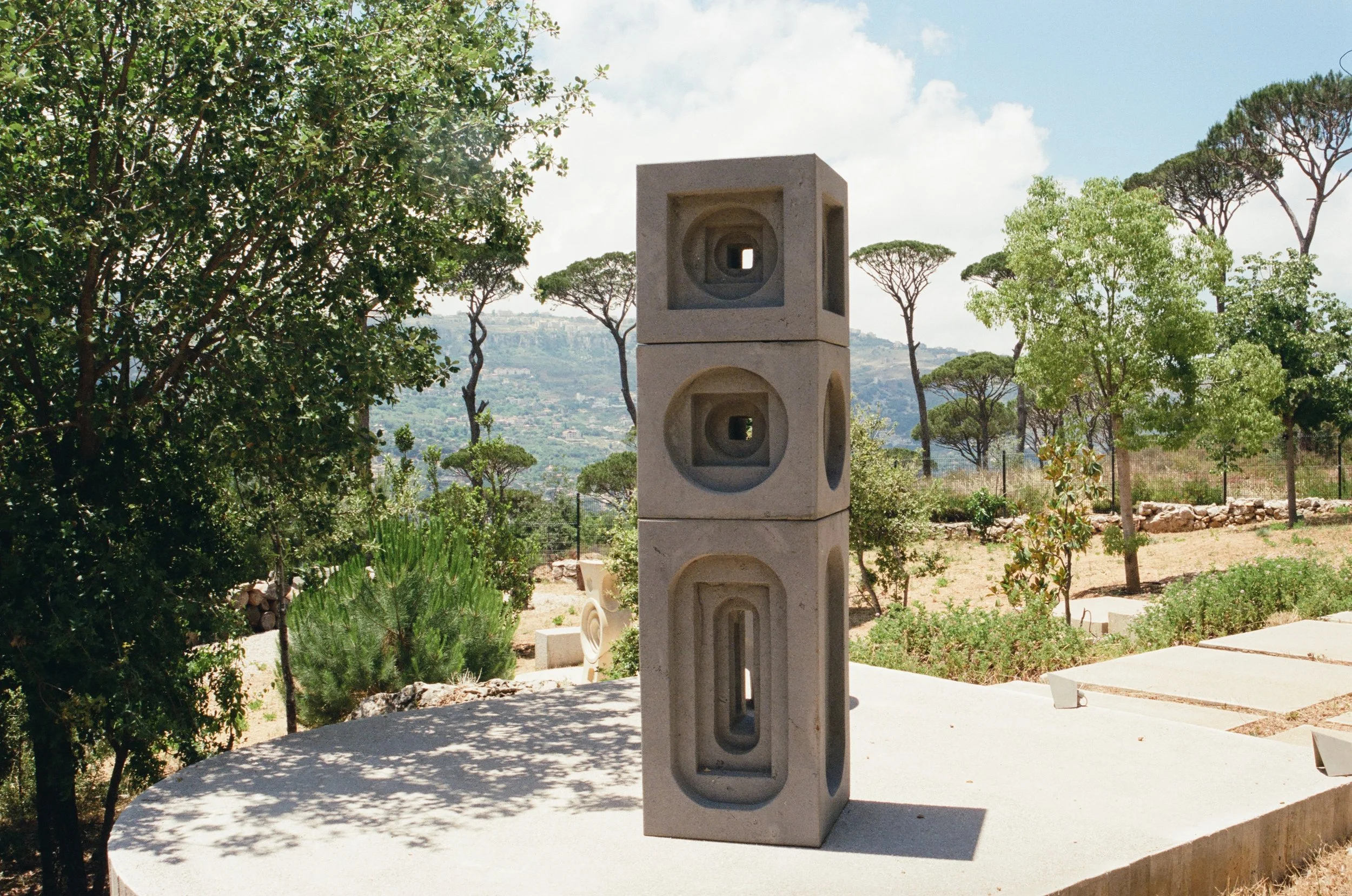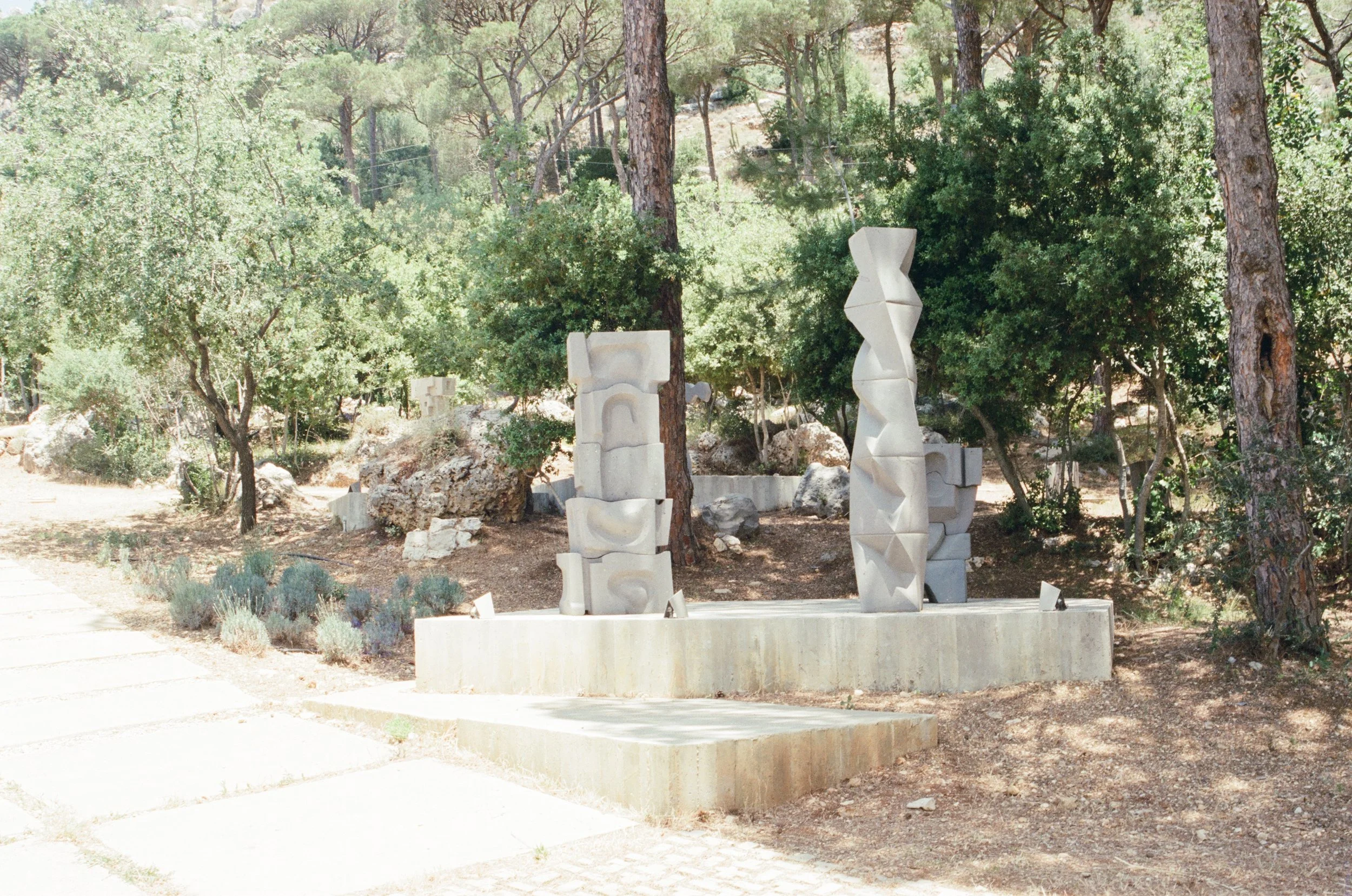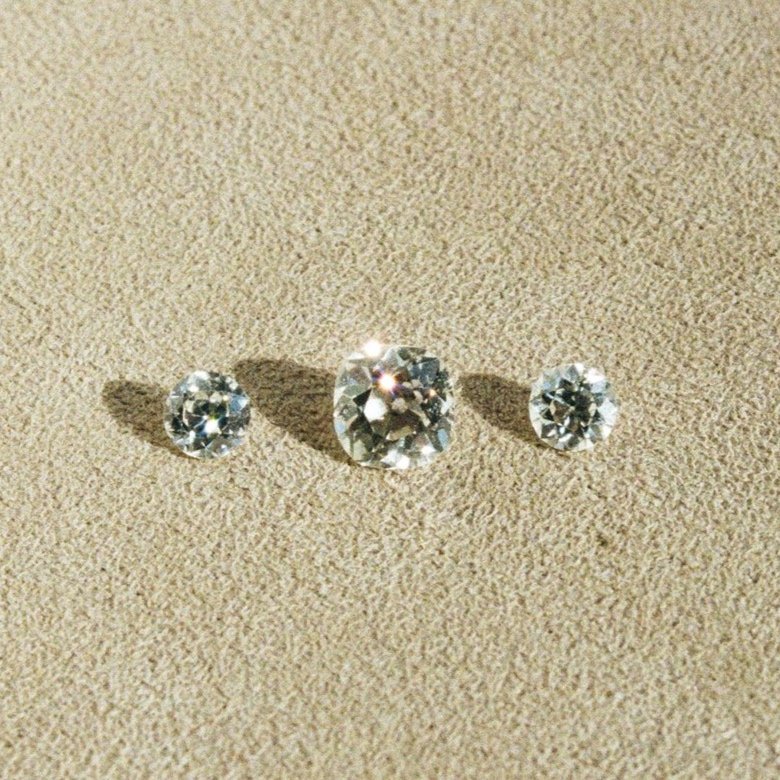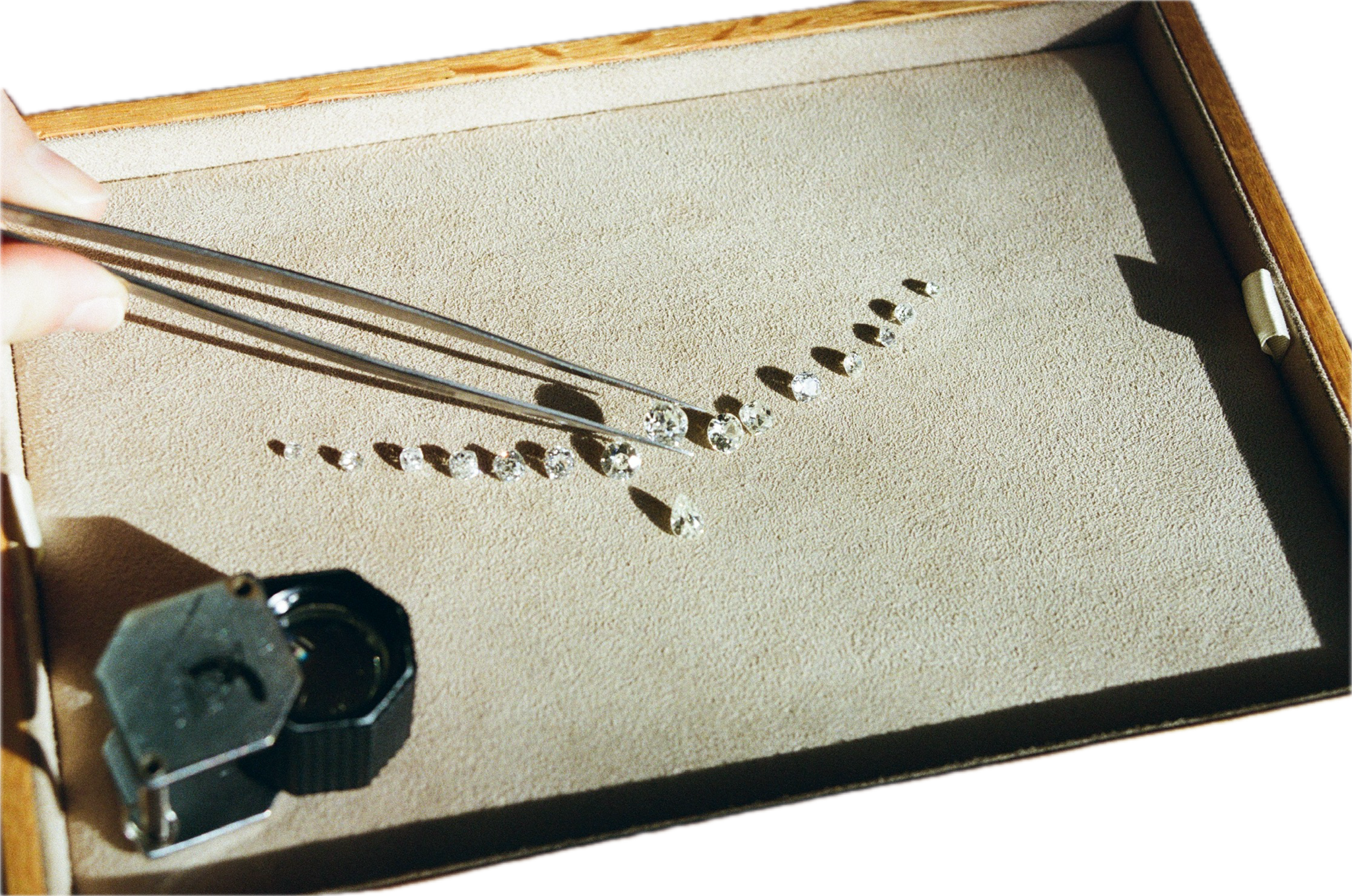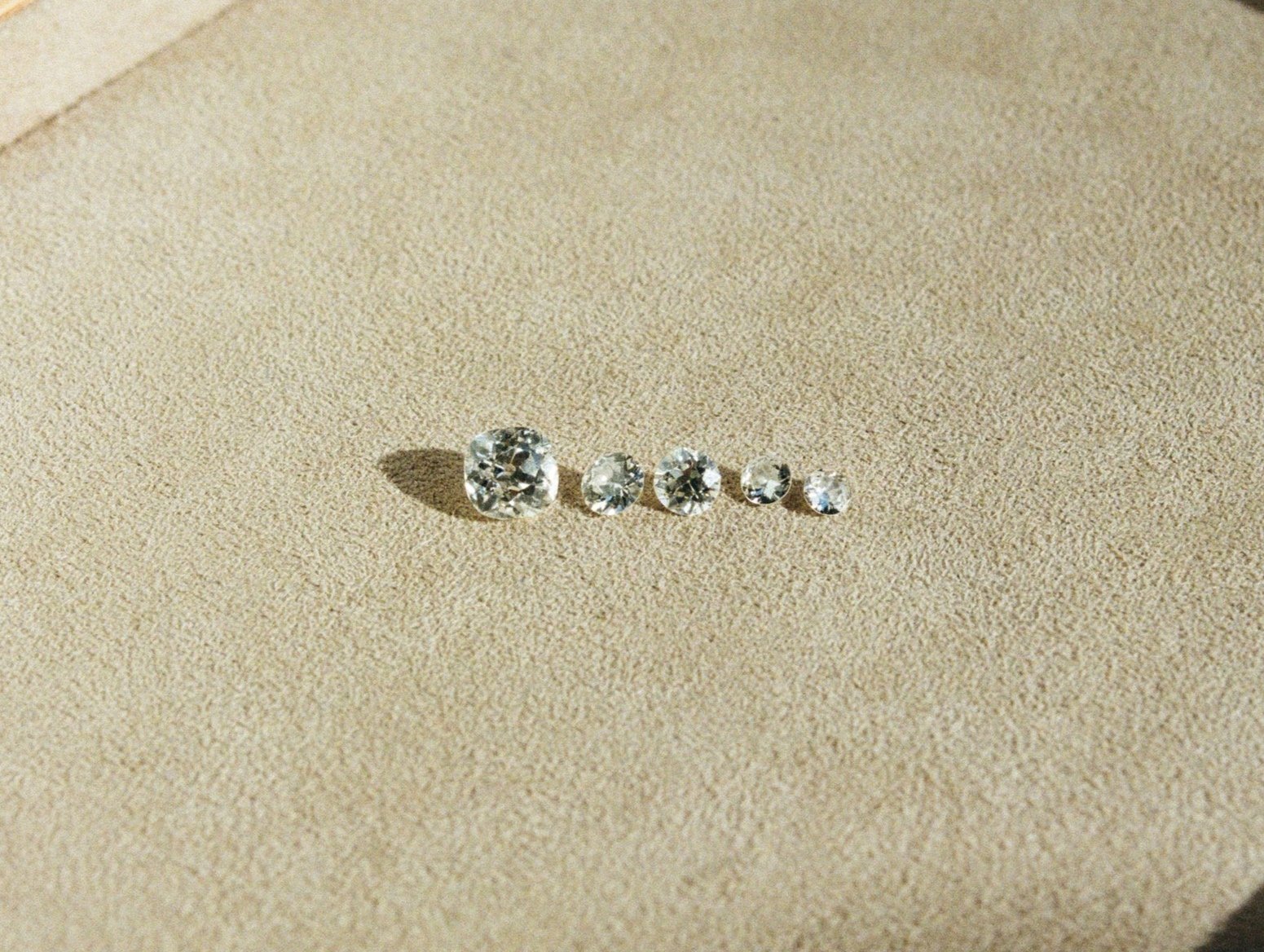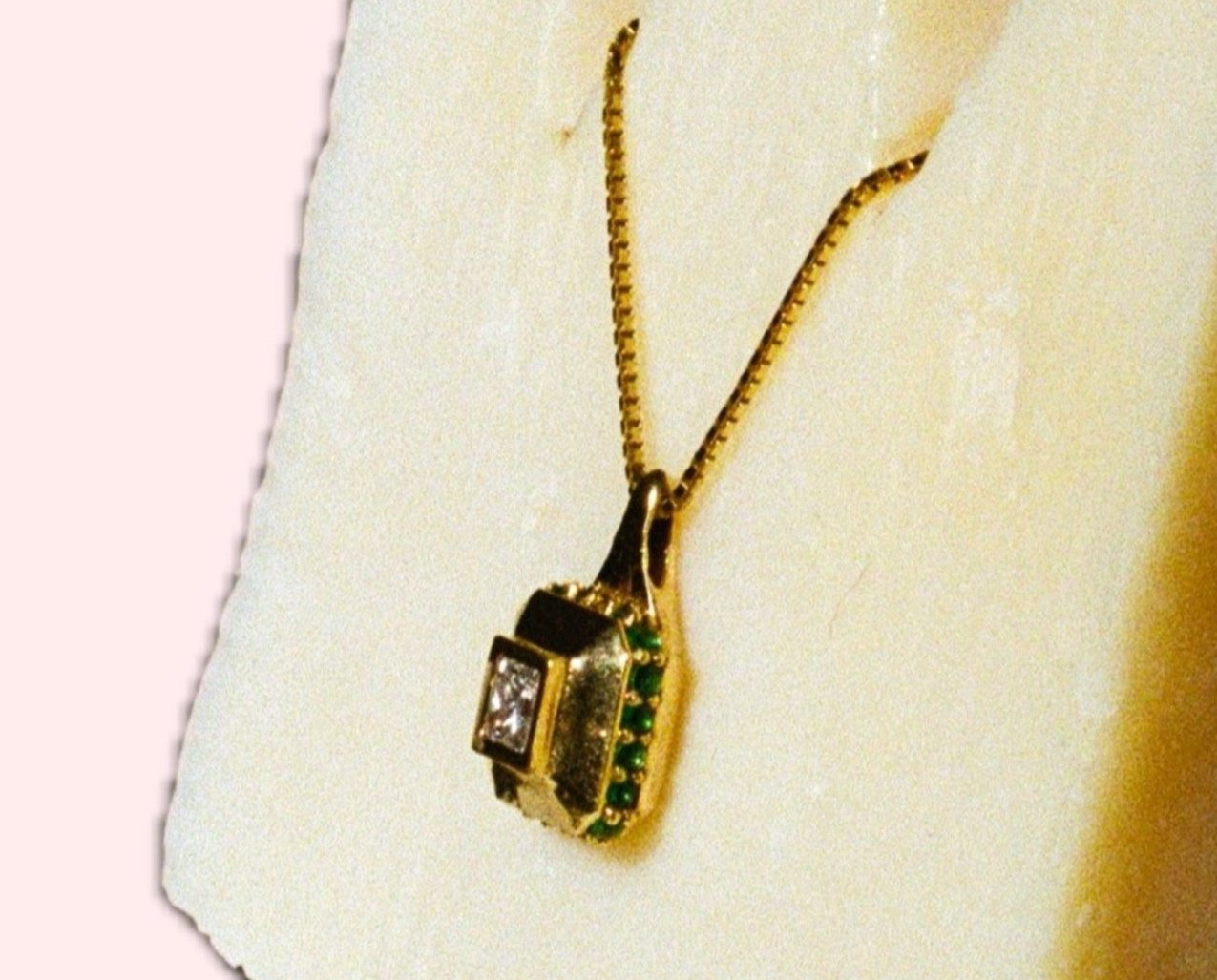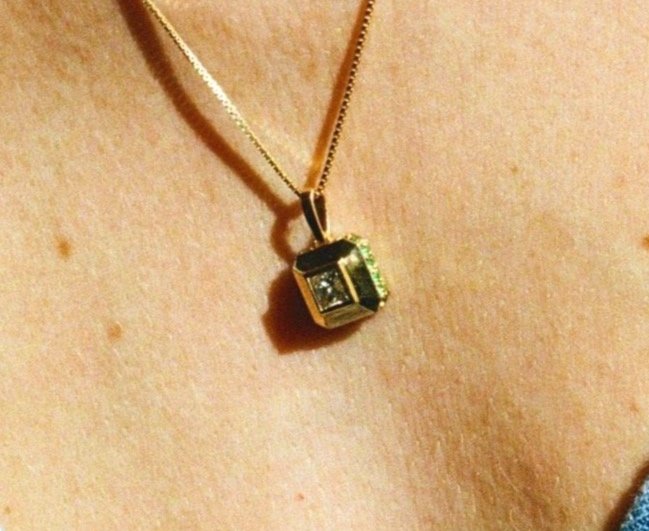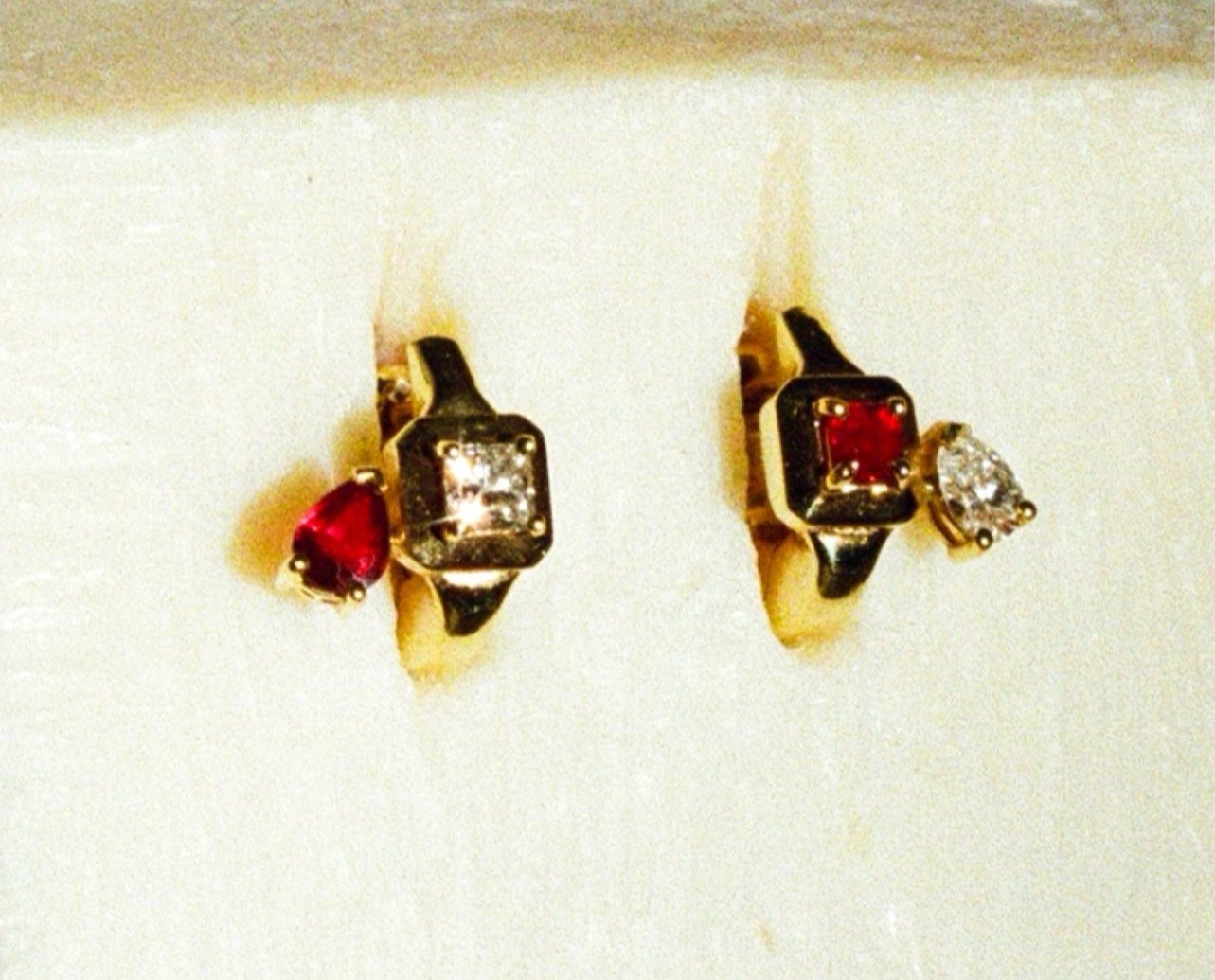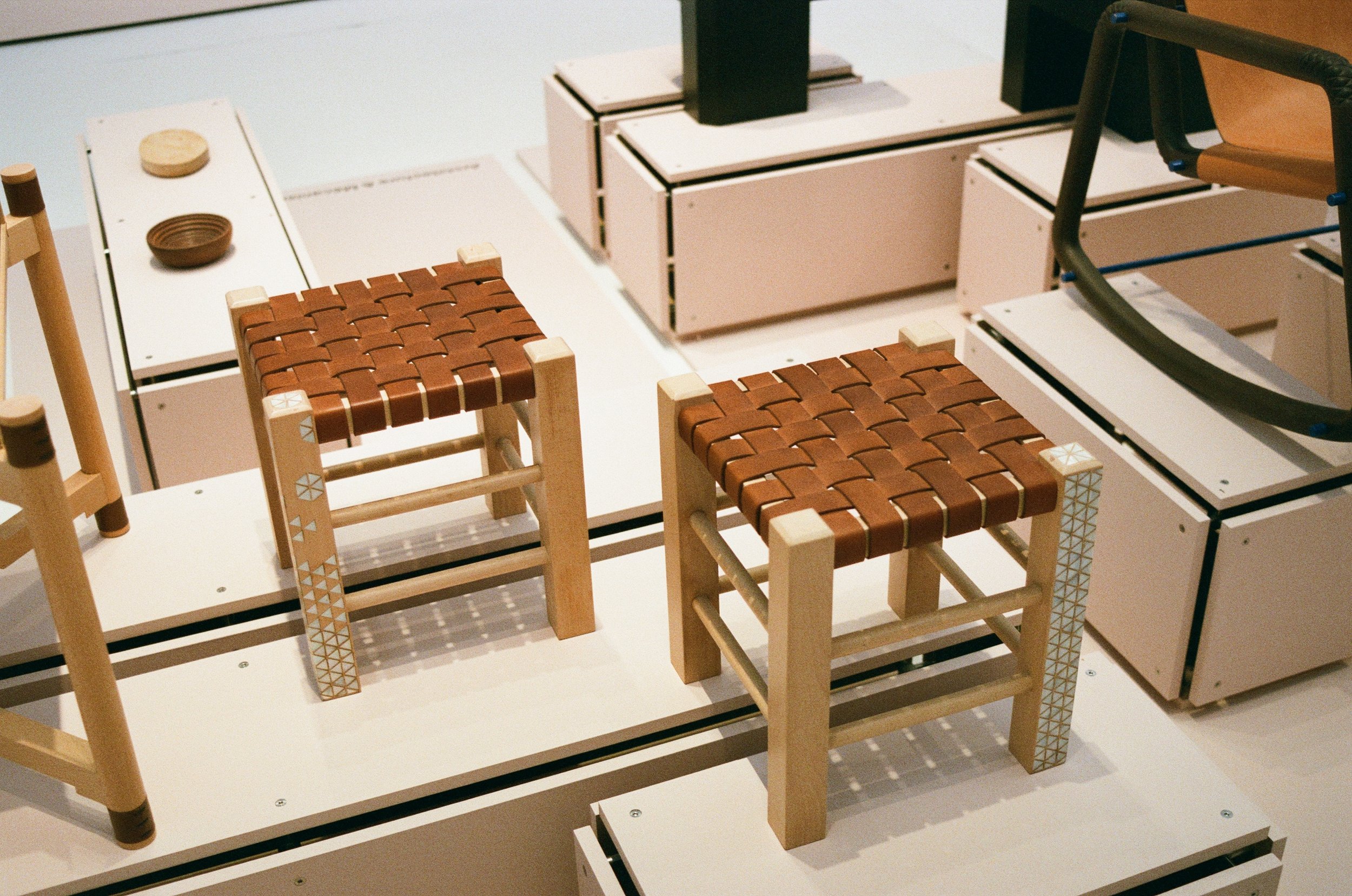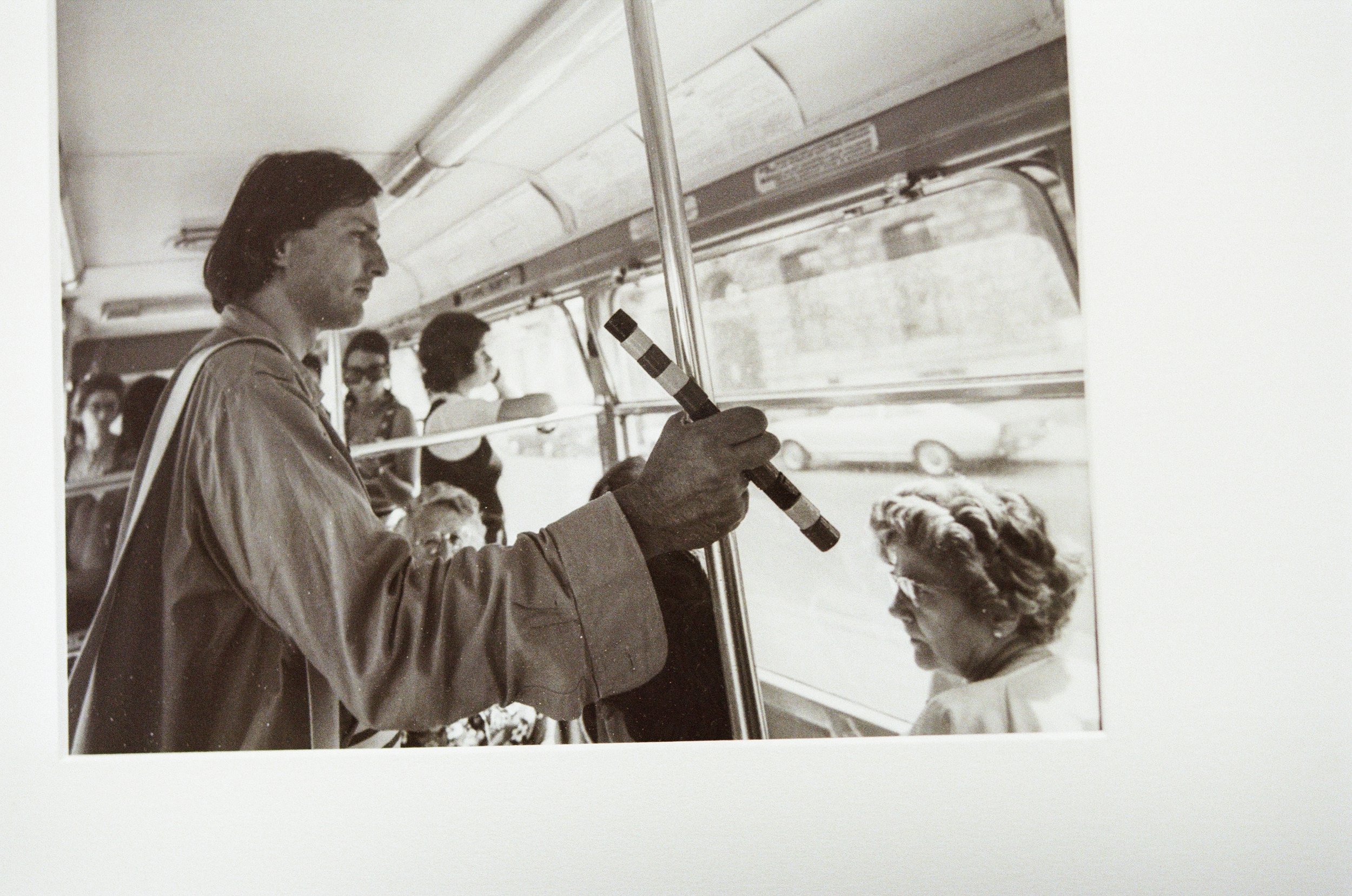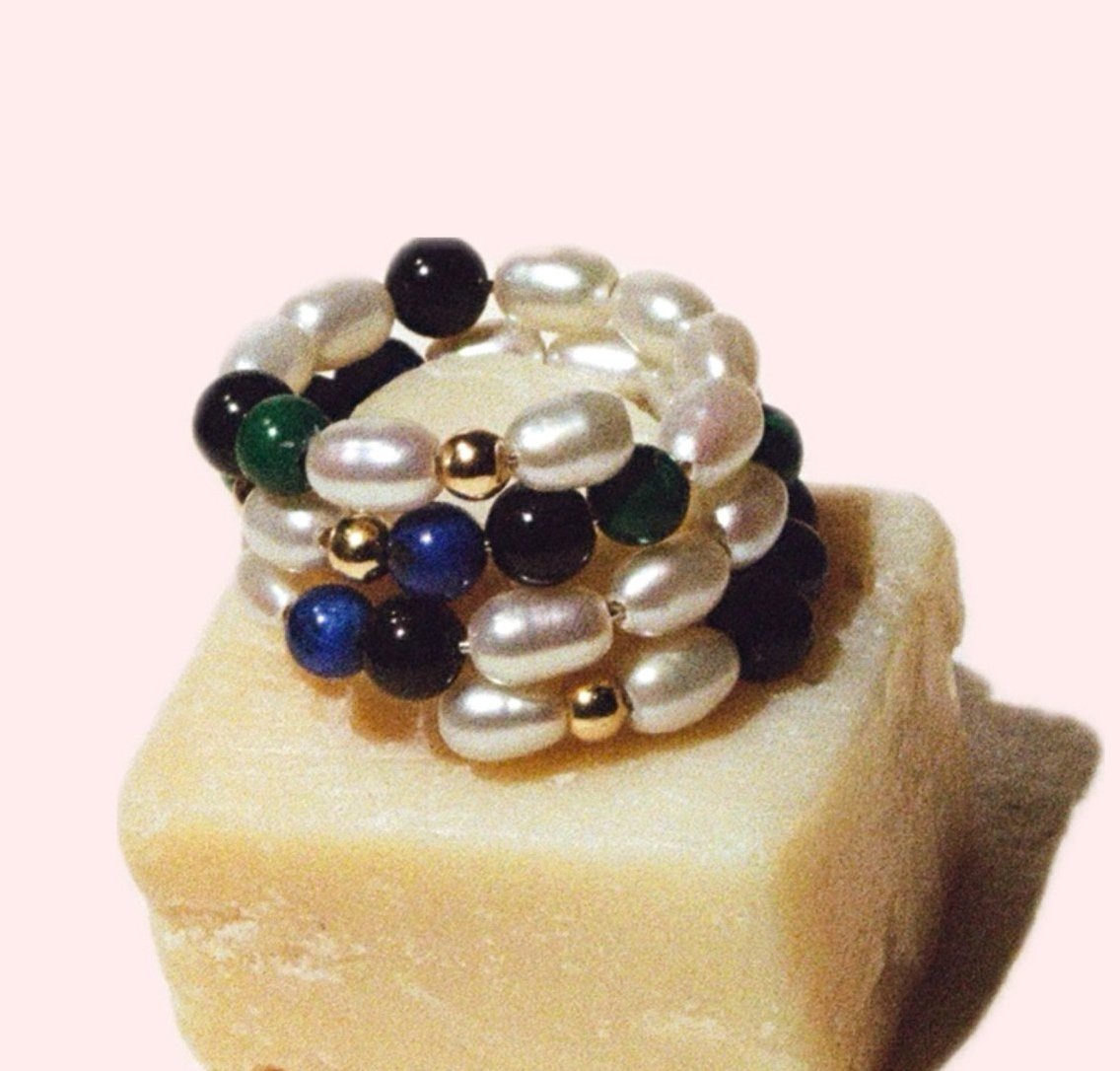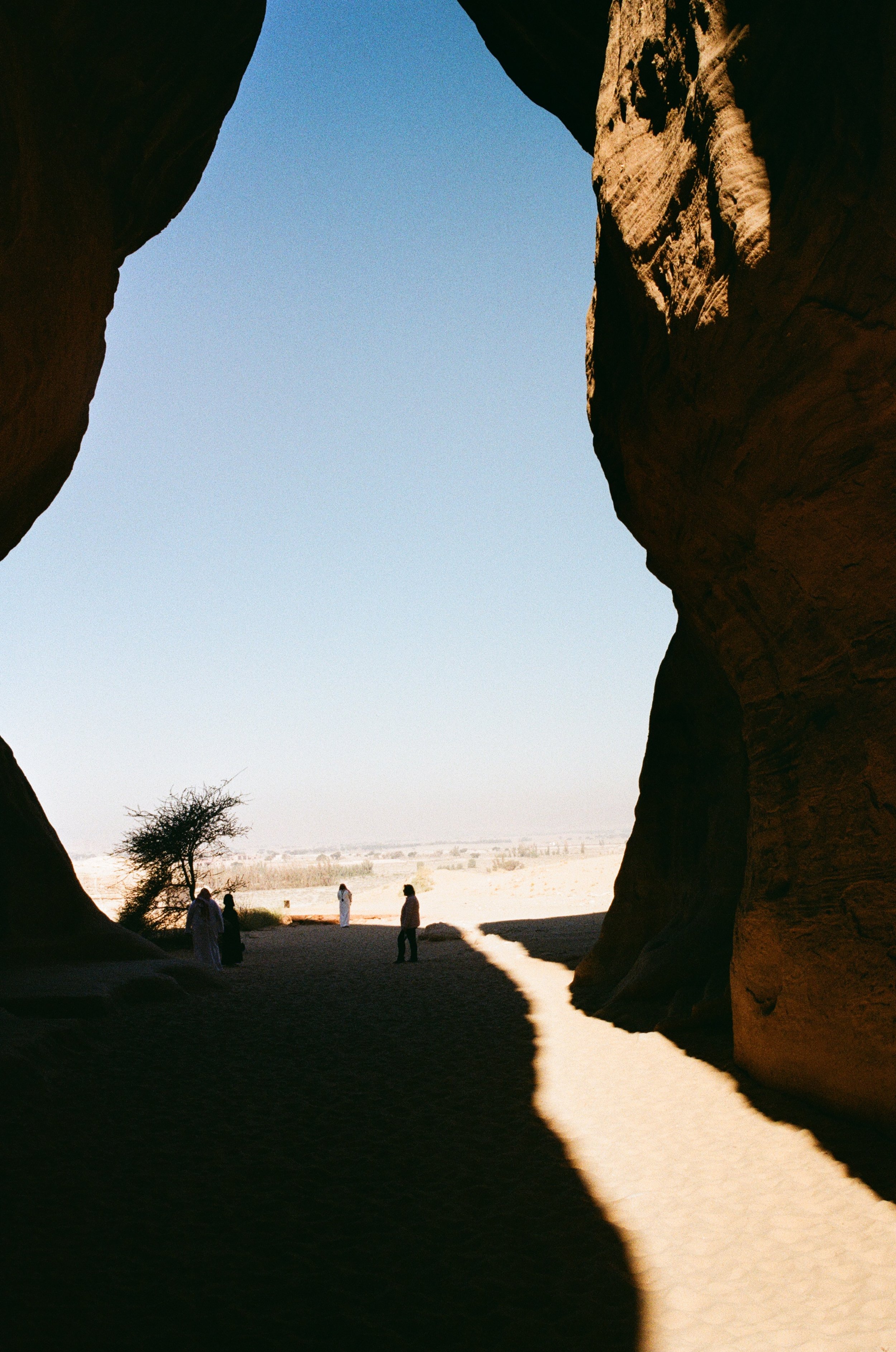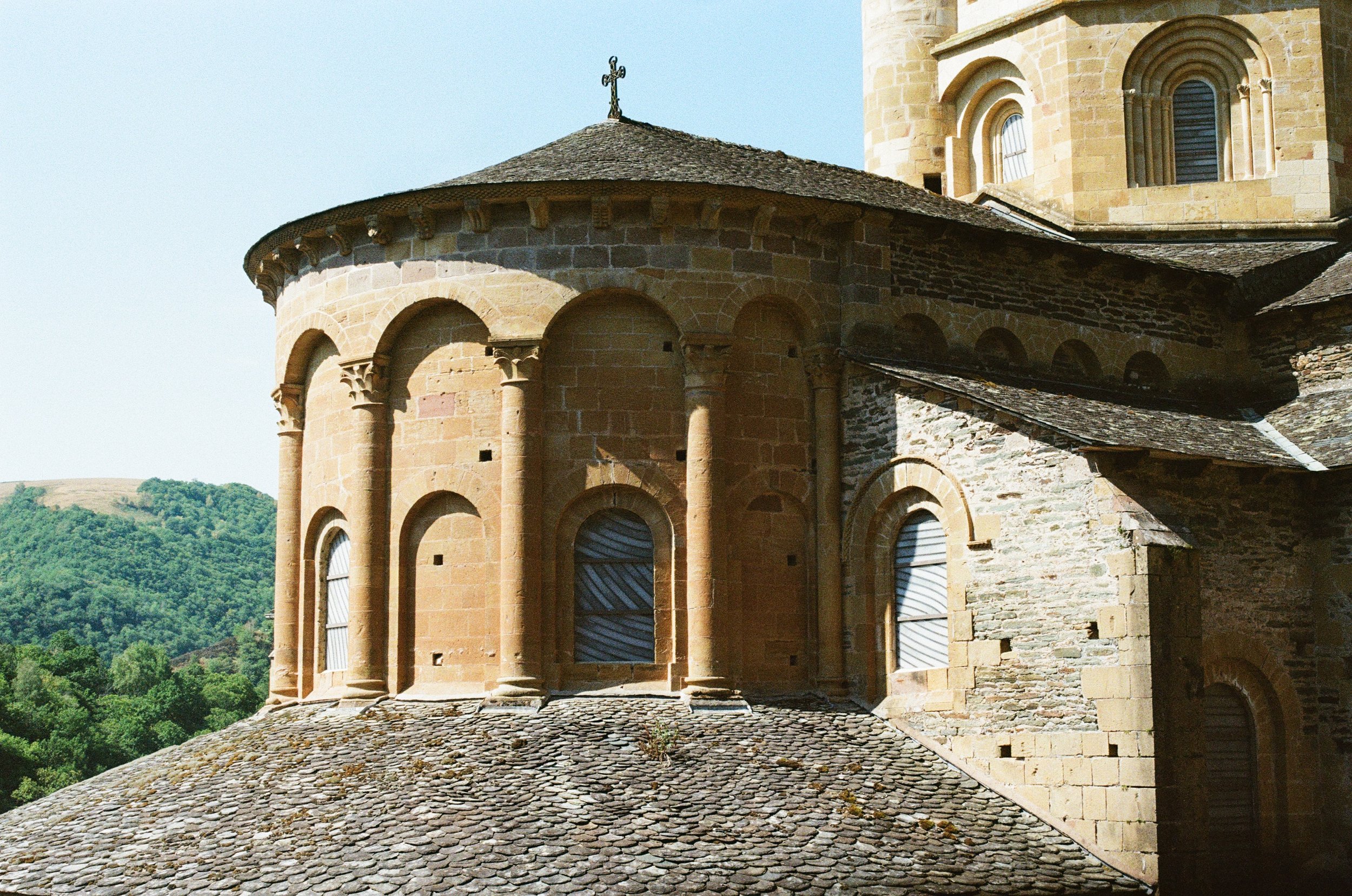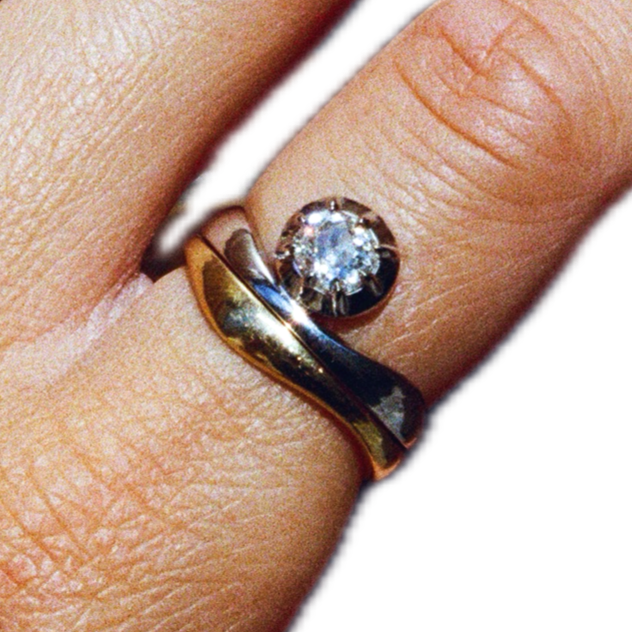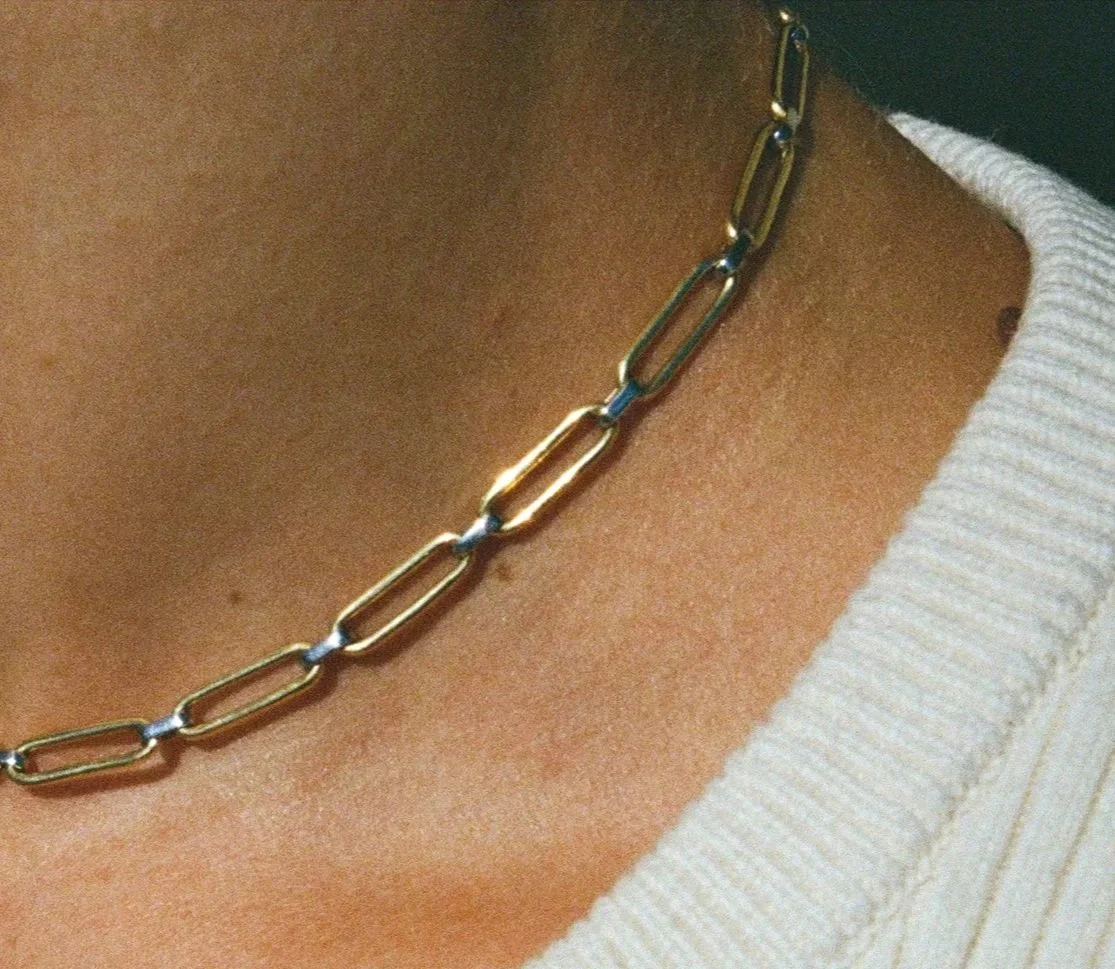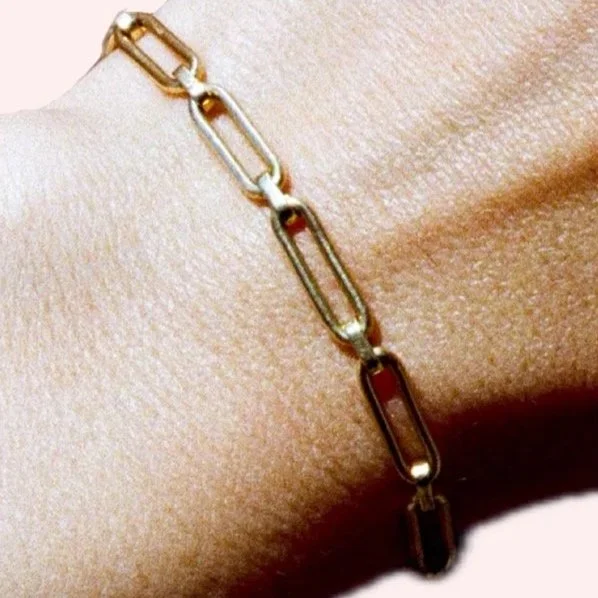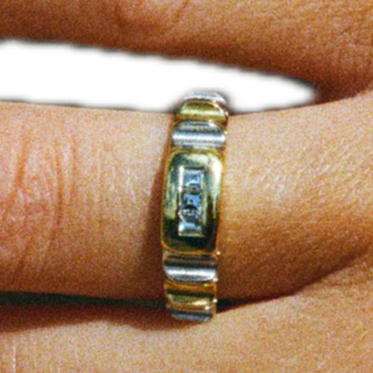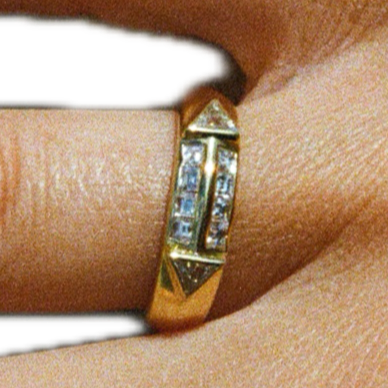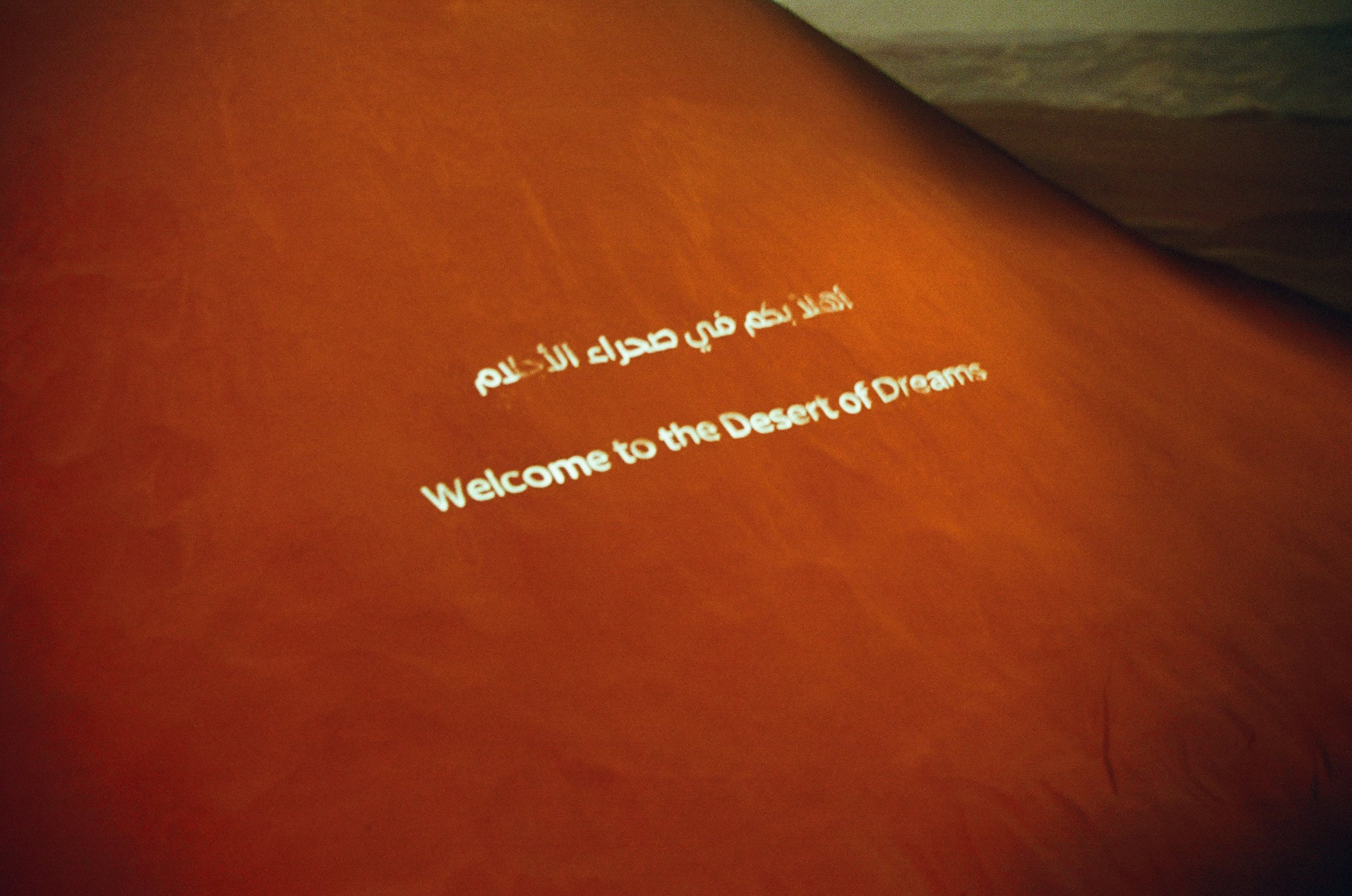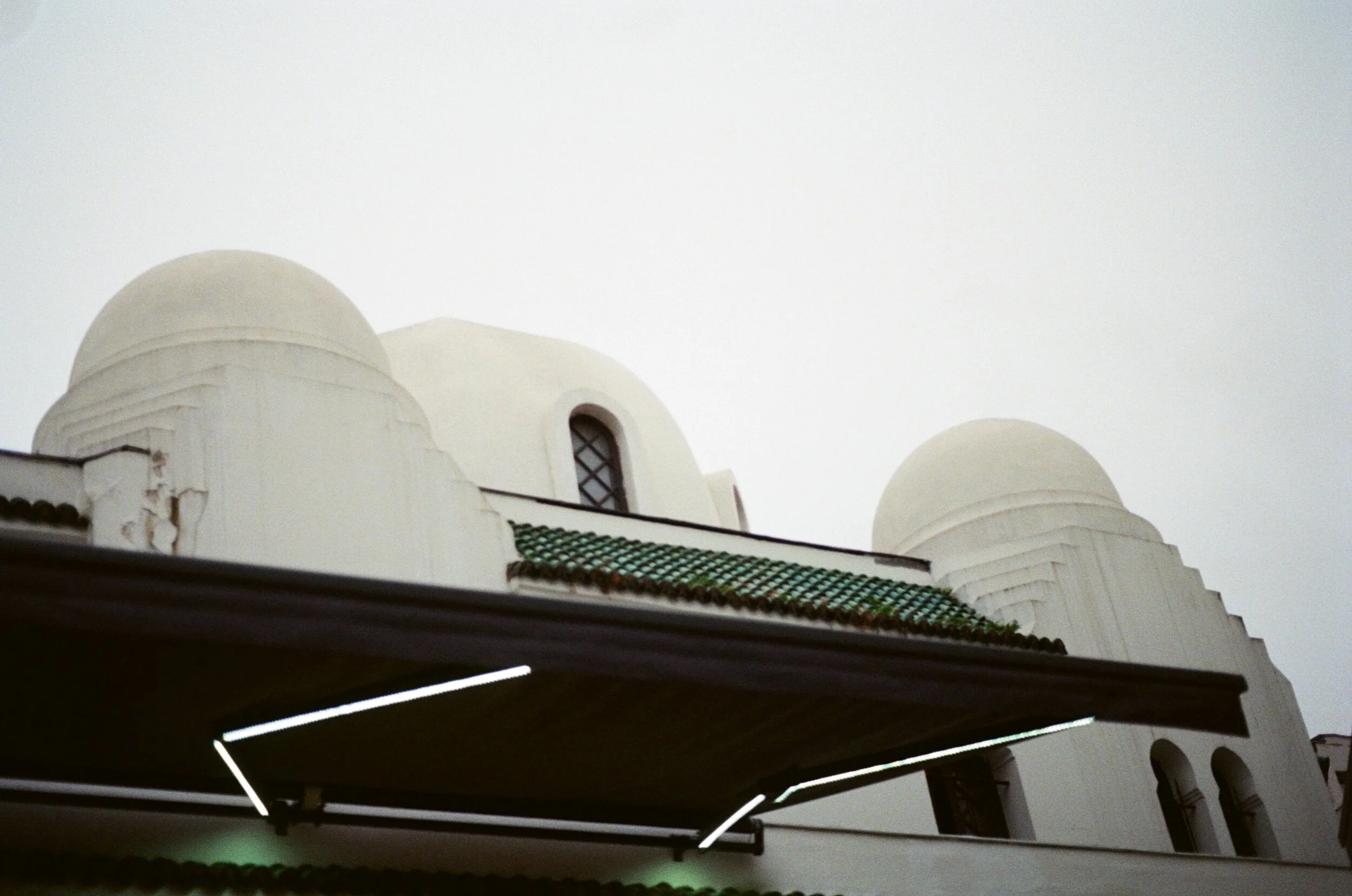The Saloua Raouda Choucair Foundation — Safeguarding a Legacy
Opened on July 24, 2024, on what would have marked the artist’s 108th birthday, the Saloua Raouda Choucair Foundation emerges as a quiet national treasure. Nestled within a pine forest in Ras El Metn, an hour from Beirut, the Foundation stands as both sanctuary and archive, safeguarding the vast and visionary oeuvre of Saloua Raouda Choucair— the pioneer of Arab abstract art.
EVERYDAY IS RADIANT DAY
YOUR MILESTONE JEWELLERY PROJECT STARTS HERE
There are milestones that must be set in stone.
Whether it’s an engagement, a new diploma, a birth or anniversary, every radiant day deserves a jewel.
Read more about our bespoke creation process below.
Step 1 - Book a private appointment with us at our Paris office 72 rue du Faubourg Saint Honoré in the 8th arrondissement. During this first encounter, we’ll talk about your inspirations and preferences and we’ll take you through our design process and timeline.
Step 2 - Following this first consultation, we’ll prepare various drawings of your future design as well as gemstone options to match.
Step 3 - Once the drawing and choice of gemstones is established, we’ll ask for a first downpayment.
Step 4 - Next we’ll get cracking on production. All our pieces are hand-crafted locally in Paris by master craftsmen. Depending on the complexity of your design, production can take up to 8-12 weeks.
Step 5 - Upon the piece’s completion, we’ll get in touch to organise a fitting and pick-up meeting in our offices.
Should you wish to customise one of our existing models or redesign an old family heirloom, don’t hesitate to get in touch with us at care@lwjjwl.eu for a quote or book an appointment with us at our Parisian office, 72 rue du Faubourg Saint-Honoré.
DIAMONDS
All our antique diamonds are sourced individually. Each date back to the 18th or 19th century and was cut by hand making them one-of-a-kind. At LWJ we have a soft spot for these charming gemstones.
-
Our modern diamond suppliers are all members of the Responsible Jewellery Council and are therefore committed to implement responsible ethical, social and environmental practices throughout the diamond supply chain, from mine to retail.
FINE AND PRECIOUS COLOURED GEMSTONES
Our coloured gemstones are carefully picked and analysed by our in-house gemologist to meet the highest colour, cut and clarity quality standards.
GOLD
Should you wish to recycle the gold from an old family heirloom to create a new bespoke piece, know that it’s not only possible but thoroughly encouraged by us! The majority of the gold we use is recycled from vintage or antique jewels. When it’s not recycled, our gold is supplied by locally based Parisian suppliers and members of the Responsible Jewellery Council.
HIGH CROWN DIAMONDS
Distinctive, romantic and gateways to skills of the past, what makes antique diamonds so different from their modern counterpart?
In the age of automation, there is nothing more extraordinary than to marvel at an antique diamond’s soft candlelight reflection. With their imperfect symmetry, high and generous crown and distinctive open culet, antique diamonds burst with personality and embody an era - one where diamonds were individually cut by hand and made to dazzle under candle-lit chandeliers.
A charming selection of reclaimed antique old mine and old European cut diamonds waiting to be set.
The ultimate sunbeam - the Luxor tekhenu on Place de la Concorde
How did a 3,300 year old Egyptian masterpiece end up on one of the largest public squares in Paris?
The story of the Luxor obelisk on Place de la Concorde in Paris is one of the many occurrences that chronicle Egypt’s coveted cultural heritage and echoes its past defilement by Western conquests and occupations.
The Luxor Obelisk, prepped and primed for the 2024 Paris Olympics.
The Romans, the first obelisk smugglers
The Romans were the first to deprive Egypt of its ancient obelisks and present them as trophies of war. In 31 BC following emperor Augustus’ defeat over Cleopatra, two obelisks were seized from the Heliopolis Temple and brought back to Rome from Alexandria.
The first obelisk was erected on the Campus Martius and later relocated on the Piazza Montecitorio where it received its title. The second was erected on the Circus Maximus and was also relocated and later raised in the Piazza del Popolo where it stands to this day. Currently, Rome still holds the most obelisks outside Egypt with 18 in total and 48 during the peak of the Roman Empire.
The Fountain of the River, Place de la Concorde, Paris, 2024
The Luxor obelisk, Place de la Concorde, Paris, 2024
When tekhenus became obelisks
The displacement and reappropriation of Egypt’s legacy by imperialist powers is a pattern that can be observed throughout Egypt’s history. Before the Romans called obelisks “obeliscus”, these monumental sunbeams were referred to as “tekhenus” by ancient Egyptians.
“Tekhenu” meant “to shine” or “to pierce the sky”. They were dedicated to the sun-god Ra and were a symbolic representation of the sun’s rays. The word obelisk appeared centuries later and derives from the Greek word “obeliskos” which meant “pointed pillar” and ostensibly holds much less significance than its original name.
Temple of Luxor Facade, watercolour, François-Charles Cécile, 1800
Britain and France’s colonial ventures in Egypt
Subsequent to the Romans, the French and the British were the next empires to exploit Egypt’s extensive ressources and cultural heritage. During the Ottoman Empire, Egypt became a battling ground for the French and the British who spent years fighting to expand their influence and power in the Mediterranean.
Napoleon tried, but failed
It is reported that Josephine de Beauharnais’ parting words to Napoleon Bonaparte before he left for his conquest of Egyptian land were “ Goodbye! If you get to Thebès, do send me a little obelisk”. Considered by colonial empires as booty to be plundered, obelisks continued to be used as symbols of power and hegemony of one empire over the other. However, Napoleon was defeated by the British, and Josephine never gifted an obelisk.
So how did the Luxor obelisk make it to Paris?
A race between two powers for the “civilised acquisition” of an obelisk
Before Egypt fell under British protectorate, it was under the Ottoman Empire and ruled by the Albanian sultan Mohammed Ali Pasha. During his reign, Pasha gifted an obelisk to the British Empire to commemorate their winnings against the French in 1801. While the British welcomed the gift, they refused to fund its perilous journey. The obelisk was moved from Cairo to Alexandria and awaited transport to London for 57 years when eventually, a generous philanthropist by the name of Sir William James Erasmus Wilson decide to fund and oversee its transfer to London.
This delay enabled France to secure an obelisk of its own in the meantime. Indeed, initially not one but two carved obelisks placed at the entrance of the Luxor Temple during Ramses II’s reign were gifted to King Charles X by the Viceroy of Egypt Muhammad Ali in 1829, as a diplomatic gesture. This came after Jean-François Champollion, a passionate French historian and linguist found the key to the decipherment of the Rosetta Stone’s hieroglyphs in 1822. But unlike the English, the French were determined to obtain an obelisk of their own and were not discouraged by the cost and difficulty of transporting it to Paris.
Champollion himself was entrusted with choosing which obelisk was to leave Luxor first. After much research, the right obelisk upon entering the Temple was chosen as Champollion considered it was more congruous to a French audience. Champollion believe the other obelisk to be damaged at the base and it was therefore left behind.
The Luxor Temple entrance after the removal of the obelisk chosen by Champollion.
engraving by David Roberts, 1838
A foreign jewel placed at the center of Paris’ revolution square
A close up of the base of the Luxor obelisk, on display at the Louvre-Lens museum
When the obelisk arrived in Paris, it took another three years to be erected. On the obelisks’ base statues of baboons standing on their hind legs with their arms raised and their reproductive organs exposed were considered too libertine for the prude Parisian audience of the time and were taken down which further delayed the obelisk’s erection. Today the base can be found at the Louvre-Lens Museum.
watercolor painting by Cayrac depicting the erection of the Luxor Obelisk on the Place de la Concorde in 1836
Then came the time to decide where to place the monumental granite sunbeam. The place de la Concorde was deemed the perfect location, a symbol of France’s tumultuous past it would reconcile the French following the revolution.
With the help of the Apollinaire Lebas, the young engineer who oversaw the transportation and installation the obelisk from Luxor to Paris, it was finally raised in 1836 in front of 200,000 curious spectators.
Considered too risky and too costly, the second obelisk never made it to France, and was officially handed back to Egypt by president Mitterand in 1981.
At the base of the Luxor obelisk diagrams show how the obelisk was lowered in Egypt
and raised in Paris.
The Republican Guard, Place de la Concorde, Paris 2024
Beirut, The Eras of Design - a pioneering exhibition on design in Lebanon at MUDAC
Richard Yasmine’s AFTER AGO collection of tables and vessels
When curator Marc Costanini stumbled upon the works of designers Karen Chekerjian in Paris and Marc Dibeh during a group exhibition in 2016 - his curiosity was sparked. The need to put together an exhibition centred on design in the Middle East and specifically in Lebanon - a pioneer of its kind, became apparent. Before it, no study had been conducted on the history of design from the country’s independence to the present day.
MUDAC - Lausanne’s Museum of Contemporary Design and Applied Arts - is the only institution in Western Switzerland entirely dedicated to design.
Seven years later, the exhibition came to life, Beirut. The eras of Design opened its doors to the public from April 7th to August 6th 2023 at the Museum of Contemporary Design and Applied Arts in Lausanne, Switzerland - with the aim to fill the gap on design in Lebanon; its origins and situation today - a subject left unexplored before then.
The exhibition follows a chronological time frame and is divided into three periods. The starting point being Lebanon’s independence in 1943, followed by the civil war period and the year 2000 when designers began moving back to Lebanon.
Above, a copy of the screen reproduced by maison Tarazi and originally designed by Serge Sassouni in 1959 for Alcazar Hotel in Beirut.
Carlo Massoud’s Arab Dolls.
Thomas Trad’s Eva Paravent.
15 contemporary studios were also invited to take part in the exhibition project and showcase their iconic pieces, telling the story and diversity of design in Lebanon with designers such as Carlo Massoud, Carla Baz and Marc Baroud.
Marc Dibeh, Stone Ops. Marble
Marc Baroud’s marble tables
The exhibition designers - Jad Melki and Ghait Abi Ghana from Ghaith & Jad architecture studio were chosen as the exhibition’s set designers. Their fragmented and adaptable installation based on three headed void pedestals convey the idea of fragility at a deeper level mirroring the city of Beirut - its archeological heritage and ever-changing nature.
Marc Baroud, Dot to Dots / Collection 1
Mary-lynn & Carlo Massoud’s BALOO buffet.
These wooden stools are the fruit of a collaboration between Minjara and Maison Tarazi.
The last component of the exhibition is the Minjara projet in Tripoli , installed since 2018 in the spacious building designed by Oscar Niemeyer. Its aim - preserve Lebanon’s woodwork heritage and to foster dialogue between traditional craftspeople and contemporary designers in a spirit of innovation.
Alongside the exhibition, a book “Beirut, the eras of design” was published. It was co-edited by Kath Books x Music Lausanne and is the first of its kind on design in Lebanon. It tells the story of the history of design in Beirut, the emergence of contemporary design and the Minjara solidarity and creative initiative.
Discover Penone’s breathtaking piece Luce e ombra, 2011 at the Musée Cantonal des Beaux Arts, opposite the MUDAC during your visit in Lausanne.
ANDRE CADERE unlimited paintings at Fondation CAB
A current show curated by Hervé Bize at Fondation CAB in Brussels shows the work of Cadere until July 15th.
André Cadere wanted to bring the piece of art out of the gallery space.
With merely the body as a véhicule for the pieces, carrying his bars himself.
At LWJ we also believe in the power of physical object and their displacement.
Inspired by Cadere’s work we are thrilled to introduce to you our new lulu w ring VWB BWPR BWGB in size 54 and adjustable.
A beautiful gender-fluid piece that would do a fantastic gift for Daddy’s day.
Mad about malachites
Alicja Kwade, Au cours des Mondes, 2022. An installation place Vendôme curated by Jerome Sans as part of Paris+ by Art Basel’s ‘Sites’ programme.
With it’s psychedelic alternating light green to dark green concentric and banded zonings, there’s a multitude of reasons why the malachite gemstone attracts jewellery lovers and amateurs alike!
This funky green malleable stone is often used in jewellery as it’s easy to work and also relays a beautiful rich and textured look when polished. The malachite derives its colour from the presence of copper in its composition and must be kept away from the heat as it is quite a soft stone (between 3.5-4 on the Mohs scale).
On a lithotherapy level, malachites are believed to resonate with those looking for emotionally balanced and calm relationships. Here are a few of the malachite’s said virtues for those who believe in the power of the stone’s natural vibrations. The malachite will help its wearer to find his place in the world. It favours changes and necessary transformations in the life of its owner so that they align with his heart’s desire as well as meaningful relationships based on love and not on need or dependency. The more regularly the malachite is worn the more it will contribute to a healthy social life. The malachite can also help heal childhood traumas. The malachite will enable its owner to realise if he is in a toxic or unhealthy relationship and act upon it. It favours the imagination and concentration. Holding it whilst meditating will help concentrate in the now.
A hidden gem - the Nabatean remains of Hegra in Saudi Arabia
Left untouched for more than 2000 years, the carved sandstone tombs of Hegra are breathtaking remnants of the life of the mysterious and once prosperous Nabatean civilisation.
Upon setting eyes on the unbelievable archeological site of Hegra, one can only wonder who these giants scultpured sandstone structures belonged to and how they came to emerge in the middle of the Saudi Arabian desert.
More than 200,000 years ago, the presence of human life could be traced in the Medina province of northwestern Saudi Arabia. During the Paleolithic period, nomadic hunter-gathers turned to farming and settled in the region thanks to the abundant natural ressources provided by the Alula oasis. By harnessing water, growing crops and herding livestock the area enabled other civilisations to flourish and develop. In the 6th century B.C the Dadan and Lihyan kingdoms arose - remnants of their writing and rock-art can still be found on site. They were followed by the rise and fall of the Nabateans - a nomadic tribe of merchants turned expert traders thanks to their geographical presence on the spice and incense trade road from Yemen across the Arabian Peninsula to the Mediterranean.
Thanks to the trade of incense and myrrh and the taxation of caravans passing through Hegra, the Nabateans prospered immensely and this is how the 111 wondrous carved sandstone tombs around the city appeared. With the rise of the Roman Empire, Hegra was soon annexed and lost its position of authority with the development of maritime shipments over land routes.
Sapphire blue skies, ruby coloured sandstone and emerald green palm groves - the oasis of Alula was a huge source of inspiration for LWJ’s a precious winter garden curation.
Extraordinary rock outcrop with profile of a human face on site in Hegra.
Unlike the Egyptians, the Jews or the Babylonians, the Nabateans did not write their history on walls, or scrolls or clay tablets but left awe-inspiring monuments for us to admire today. The Nabateans’ capital was Petra in Jordan which was first “discovered” in 1812 by Swiss explorer Johann Ludwig Burckhardt.
Hegra on the other hand was kept secret from tourists for more than 2000 years even after it became the first Unesco World Heritage in Saudi Arabia in 2008. After being kept undisturbed for years, the ancient city opened to the general public in 2019 when Crown Prince Mohammed bin Salman launched tourist visas for the first time as part of his new roadmap entitled Vision 2030 with the aim to diversify its economy from oil earnings and develop into a global trade and tourist hub connecting Africa, Europe and Asia.
Stroll through the charming streets of Alula old town where pilgrims, travellers and permanent settlers gathered through the ages.
Alula oasis counts more than 2.3 million date palm trees - with it’s abundant ressources, it’s no wonder the first hunter gatherers decided to settle in the region more than 200 000 years ago.
Outrenoir retreat on the route to Santiago del Compostella
There are many beautiful villages in the Aveyron region on route to Santiago del Compostella but one that is undeniably worth the stop is the ridiculously picturesque village of Conques with it’s unique Romanesque Abbey-church and medieval treasure of goldsmith art.
There are many beautiful villages in the Aveyron region on route to Santiago del Compostella but one that is undeniably worth the stop is the ridiculously picturesque village of Conques with it’s unique Romanesque Abbey-church and medieval treasure of goldsmith art.
Distinctive for its function as a pilgrimage church the Saint Foy abbey church is registered among the World Heritage list. The massive structure made of yellow limestone, pink sandstone and grey-blue schist includes one of the most significant tympanum of the Last Judgment - a masterpiece of Romanesque art, as well as Pierre Soulages’ incredible contemporary glass windows.
Commissioned by the Ministry of Culture in 1986, Pierre Soulages immediately accepted the offer to design the abbey’s stained glass windows. Growing up in Rodez a few miles from Conques, the discovery of St Foy as a child left him in awe and consolidated his desire to pursue an artistic career from that point on.
It took Soulages and his team 7 years of research and testing to create the perfect glass to fill the Abbey-church with light. Unlike the past Gothic figurative and multicoloured stained-glass windows set after World War II, Soulages envisioned a chromatic, natural light and managed to create a translucent glass that was able to block the outside view but not the light from seeping in.
The result is outstanding, depending on the sun’s position and the light each day; the glass windows - divided into oblique lines - can naturally diffuse a chromatic colour scale from dark blue to turquoise or hot orange to yellow or Soulage’ signature luminous white.
The Land of Dreamers Who Do
Shaped like a falcon soaring into the sky, the UAE Expo pavilion is nothing short of extraordinary. Designed by Santiago Calatrava and inspired by the host country’s national emblem the falcon - the 15,064 sqm space is astounding in beauty and engineering. With a solar panel roof sheltered by carbon and glass-fiber movable wings controlled by a sophisticated hydraulic system, the pavilion titled “ The Land of Dreamers Who Do” embodies sustainability and progress.
Upon entering the pavilion, visitors are welcomed by a modern oasis recalling the Falaj - a traditional irrigation system that used to channel water from wadis to wells. The Falaj is a beautiful example of how the pavilion honours the UAE’s past and future, its traditions and recent innovations.
A dreamy oasis showcases the UAE’s natural flora.
“The beating heart of Expo 2020, Al Wasl Plaza embodies the theme of Connecting Minds. Creating the Future and celebrates the magic that happens when people, cultures and ideas come together.”
Visitors are then lead to the Desert of Dreams, a sensory experience through sand hills on which are projected stories on the UAE’s history - its nomadic past up until today.
By the end, the sand dunes turn to glass illustrating the UAE’s incredible and rapid urbanisation over the years.
After wandering through hills of sand, it is inside a giant Pearl auditorium that visitors are able to delve deep into the history of the nation and its people and experience an immersive audiovisual show whilst being physically elevated during the screening thanks to a lifting platform.
At the apex of the building an oculus skylight reflects the Expo’s logo. Placed underneath it - the Pearl, a unique theatre with a seating capacity of up to 200.
Powering the building and open during the day to absorb sunlight, visitors can admire the pavilion’s incredible photovoltaic panelled roof.
With inclusivity and sustainability at heart the breathtaking pavilion demonstrates the UAE’s incredible dynamic and forward-thinking spirit making it an unmissable highlight of this year’s Expo.
Christo and Jeanne-Claude’s Arc de Triomphe, Unwrapped a posthume wonder
It’s finally here! After multiple delays (including falcon’s nesting on the monument, Christo’s death in May 2020 and a global pandemic) - the artistic duo Christo and Jeanne-Claude are back one last time with their monumental and temporary piece: l’Arc de Triomphe,Wrapped. Dreamed by Christo and Jeanne-Claude in the 1960s and completed fifty years later by his nephew Vladimir Yavachev as Christo desired before he passed away; the Arc de Triomphe,Wrapped involved more than 1000 people and represents 25,000 square meters of recyclable silvery blue polypropylene fabric encased in 3,000 meters of red rope in the same fabric.
On view from September 18th to October 3rd 2021, the famous Place Charles de Gaulle (formerly known as Place de l’Etoile) was made traffic-free for the opening weekend, a wonderful initiative for pedestrians to admire the enormous “wrapped” Napoleonic monument by foot without any disruption.
sketches of Christo’s L’Arc de Triomphe,Wrapped on sale at the 2020 BRAFA
Understanding Christo and Jeanne-Claude’s art is understanding their state of mind. Behind each of their astonishing public art works, there has always been the desire for utter creative freedom and it was made possible through the ingenious self-financing of all their artworks. Indeed, the gigantic 14 million euro project was fully financed by Christo himself through the sale of his preparatory drawings, collages, scale models of l’Arc de Triomphe as well as lithographs dedicated to other subjects - he did not benefit from any private or public fundings.
This grandiose posthume work of art is the last from Christo and Jeanne-Claude, an extraordinary couple whose unpossessible art -which they wished accessible to all - will remain forever etched in our memories as temporary bubbles of beauty and folly in a very real world.
When wounds are still open - is there room for art?
Like another crane in the sky, a giant steel sculpture could be observed on Beirut’s Port a year after the devastating Aug 4th explosion. Conceived by Lebanese architect-artist Nadim Karam and entitled “The Gesture”, the temporary structure - composed of steel remains from the destroyed Port’s hangars, was revealed a few days before the commemoration. In the form of a human figure holding a bird - the impressive structure made from 25 tons of the city’s “scarrs” (like many land art pieces) - created a public uproar on social media.
Crowds gather on the Autostrade on August 4th 2021 for the commemoration
While some praised the artist’s gesture and boldness others deemed it too soon for of any kind of memorial to be erected when Lebanese authorities have taken no thorough steps since the explosion to investigate on its cause.
The financing and permissions behind the “Giant From the Ashes” were also put under the spotlight. Karam denied any government affiliation and declared “The Gesture” was funded solely by private companies and developed by his studio along with other professionals who worked on the project pro-bono.
The sculpture raises the issue of art in a context of trauma and political injustice - a question that pervades Nadim Karam’s work on the power of creativity over violence in a post-disaster environment.
Mazaher on Monnot Street
A few minutes away from the bustling Fouad Chehab “ring” intersection, in the residential district of Achrafieh, lies Monnot Street, an urban historical gem. Lined with orange blossoms this charming Street has known countless changes over the past half-century. Sometimes written with one “n” sometimes two, Monnot Street is a mobile entity like most of Beirut’s urban planning that knows no respite since the 1990s.
This narrow and sloping street of 640m long once served as a demarcation line between East and West Beirut during the civil war. After the war it became a recreational hot spot for Beirut’s golden youth, with pubs, theaters and clubs packed with party-goers every night of the week.
Today, the orange trees decorating the street’s sideways infuse the air with the fragrant smell of orange blossom. Passersbys can be seen chatting and picking the sweet white flowers from the trees, inhaling their exhilarating smell.
Orange Blossom Water
The flowers of these bitter orange trees, are picked and distilled to make “Mazaher” orange blossom water, used to flavour many Lebanese food or drinks. It is said Mazaher was promoted with the invention of the alembic during the Umayyad caliphate (AD 661-750), and rapidly became widespread. The famous Lebanese “white coffee” is made by adding a drop of orange blossom water to a cup of boiling water, a soothing drink that is known to help with sleep and digestion.
An artistic encounter on Monnot Street
Noor, a young Lebanese artist showing us one of her latest etchings on Monnot Street. It depicts a woman hanging from a bouquet of strawberries. “The strawberries are keeping the woman safe, despite everything she is going through” explains Noor.
Noor wearing our fraise pendant.
Sunny Citrine
Quartz which includes the citrine gemstone, have been used for thousands of years and were very popular ornaments during the Hellenistic Age and throughout the Roman period. They resurfaced during the Victorian era. It is said Queen Victoria was particularly fond of citrine as it could be found locally in the Scottish Highlands. Citrines during that time were often used in Scottish shoulder brooches and kilt pins. The gemstone then grew extremely popular again in the 1930s and 1940s during the Art Deco movement where they were used as decorative ornaments on jewellery, clothing and even household items!
Citrines just like amethysts belong to quartz family. Not only is quartz one of the most abundant minerals on the earth’s continental crust, it is a robust and ideal gemstone to use in jewellery as it does not present any “cleavage” and has a hardness of 7 on the Mohs scale. There are two main varieties within the quartz family: macro-crystalline quartz that form large distinct crystals which includes citrine, amethyst, prasiolite and amétrine; and micro-crystalline quartz that is composed of minute crystals gathered together such as jasper, agate and chalcedony.
The citrine’s name derives from the latin “citrus” meaning “lemon tree” due to its natural yellow to brownish-orange shades. The gemstone was officially named in 1556 by Georg Bauer, the father of mineralogy, and was long confused with yellow topaz a completely different gemstone with a higher reflective index and hardness. Most citrines come from Brazil, but they can also be found in Zambia, Bolivia, Canada and Uruguay. The most valuable citrine is called Madeira citrine after the fortified Portuguese wine from the Madeira Islands which shares the same golden-brown colour.
Citrines are sometimes referred to as the “merchant’s stone” as they are said to bring prosperity and abundance to those who wear it. It is a stone that helps in the manifestation of certain goals or objectives. It is considered to boost confidence, courage and encourages decision and risk taking - a great stone for entrepreneurs as it also fosters optimism and concentration.
The citrine is the birthstone for the month of November, it’s a delightfully warm stone, that’s beautiful to wear in summer on bright sunny days or autumn as leaves turn golden-orange, a romantic and fascinating stone that evokes vitality and happiness.
SOME OF OUR PRE-OWNED CITRINE RINGS
Rose Quartz, the self-love stone
Chatoyancy and asterism phenomena in Rose Quartz
Not only are rose quartz known for their gorgeous milky pink pastel tones and transparency, they are also fascinating crystals to study and seek energy from. They belong to the quartz family (along with amethysts and prasiolites) and can be found in Brazil, Madagascar, South Africa and India. Possible chatoyancy, asterism and girasol light phenomena can be observed on the surface of these gemstones which makes them a captivating group to discover with a wide pallet of colors, interesting inclusions and textures.
If you’re wondering what asterism looks like, have a look at the star rose quartz cabochon pre-owned silver ring from our SAKURA curation. You’ll notice four shimmering bands in the shape of an X due to the light’s reflection on tiny rutile needle inclusions inside the gemstone which gives it an incredibly silky and glossy texture!
LOVE
Did you know rose quartz is often associated with love, the love of others but mainly the love and appreciation of oneself? This is why this stone is said to bring love to you indirectly through the practice of self-appreciation. It’s also a fabulous stones for newborns due to its soothing virtues and also has the ability to adapt itself to the magnetic field of its wearer!
more from “Hanami Lunch Break”
ENTITRE : Damask Rowsary - when all subsides, ornaments remain
The DAMASK ROWSARY piece embodies resilience and softness.
Japanese cultured pearls
As we celebrate Japan and the beauty of Spring under the Cherry Blossoms, let us tell you the story behind our Damask Rowsary necklace made of Japanese cultured pearls with a rosy luster resembling the delicate fleeting petals of the SAKURA.
We stumbled upon these pearls a few years ago and discovered that they dated back to the 1960s and had come from a Japanese marine pearl cultivation. Their distinctively small size (2mm in diameter), round shape and incredible luminousness is hard to come by in this day and age. Time has enhanced their beauty and the idea of pairing them with a falamank cross in a modern choker design soon became evident. Our intention was to magnify the purity of the pearls with the singular glow of rose-cut diamonds to create a soft and meaningful piece for all generations to wear.
A Palace in Beirut on March 10th 2021, 7 months after the Port explosion. These intricate ornamental marble stands held out against the blast.
Our MMXX Sterling Silver ring marks the year of our launch and the start of the pandemic year, one that will go down in history.
MMXX a year to be remembered
Following Smart ESA’s start-up acceleration programme in Beirut, we launched LWJ in the middle of the MMXX pandemic year with the belief that when everything is destroyed what remains is the material, the artifact, the ornament.
Like archeologists study ancient civilisations through the physical remains of their past human activity, from tombs, to manuscripts and talismans - at LWJ we believe in the importance of ornaments in our daily lives, as they provide historical proof of our time on earth. When all subsides, ornemants remain and tell our story for us.
After a year of the Great Global Lockdown, the spread of an unknown disease, on and off confinements and restrictions and one of the largest non-nuclear explosions in Beirut; the need for justice, hope and reassurance has never been so shared.
We designed our Damask Rosary with the intention of bringing together what we find most compelling about the East and the West, the Turkish-Syrian rose-cut diamond setting technique “falamank” with the Western latin symbol of the cross and modern choker design; however following the Beirut blast and the emergence of a global pandemic, the necklace took on an even larger symbolic, one of hope and unity, inspired by the figure of the Virgin Mary - that from darkness stems the light.
Virgin Mary : the Mystical Rosary
Our Damask Rowsary alludes to the power of the Mystical Rose. When in Beirut, one cannot help but notice the number of statues of the Virgin Mary nestled on every street corner, like a reassuring ornament amongst the chaos. The picture on the left shows walls of a house in the aftermath of the Port explosion. The windows are shattered, but the figure of the Virgin Mary was left untouched. A light at the end of the tunnel.
Selecting rose-cut diamonds for our falamank pieces including the Damask Rowsary necklace which flawlessly blends the rose-cut diamond's delicate glow alongside the Japanese cultured pearl’s soft luster. Our Damask Rowsary can be custom-made to your neck size, get in touch at care@lwjjwl.eu for more information.
more from “Hanami Lunch Break”
Poirier En Suspension Palais d'Iena
Designed by architect August Perret in 1939, the Palais d’Iéna which houses the French Economic Environmental Council is an outstanding architectural marvel and also a space that is particularly adapted to three dimensional art.
During the 2018 FIAC in Paris, a year before Giuseppe Penone’s Matrice di Linfa, the Palais d’Iéna hosted « Suspension » an exhibition curated by Mathieu Poirier compiling a history of hanging sculptures from 1918 to 2018. Marcel Duchamp was one of the first to to experiment with gravity with his 1918 sculpture de voyage (sculpture for traveling) and soon paved the way for “Mobile” art which really took off in the 1950’s, in the early days of space exploration with artists Soto, Daniel Buren, Julio Le Parc, Sol LeWitt or Robert Morris.
Yves Klein’s relief planétaire bleu sans titre (RP 23) 1961
ENTITRE - Singer songwriter Sara Boy performs "a little life" for Cube Sessions in Pavillon MMXX
An intimate live performance of a little life by Sara Boy was released part of the Cube Sessions on Beirut-based digital media Balkoon on Nov 20th. The live performance was filmed in Beirut on Beirut Digital District’s rooftop during the Beirut Art Fair 2019 inside Pavilion MMXX, an in-situ exhibition curated by André Damas for LWJ, before Sara Boy headed back to Paris from the middle east.
a little life
Sara Boy released a little life on July 5th, an extract from her upcoming EP now in preparation in Paris after having recently collaborated with Stockholm-based producer Neeco Delaf on the track spring never comes out recalling her time in Dubai.
a little life combines Sara Boy’s emotional ambient sounds and singular voice layerings with powerful lyrics about culture, ancestry, the value of success and the infinite number of lives and perspectives that surround her.
a little life
Sara Boy
about Sara Boy
Sara Boy grew up in South-East Asia but is of French origin. During her high school years she joined a local choir and discovered the Allegri’s Miserere and the power of Gregorian chants, while constantly listening to soul, folk and RnB singer- songwriters. She still draws on this classical repertoire in her songwriting, as her melodies involve multiple vocal layerings and harmonies, giving them an ethereal almost spiritual feel.
Sara Boy released her first EP urotour in 2018 where she poetically speaks about belonging or the lack of it in a globalised world. Showcased on Beehype’s Best tracks of 2018 from the Middle East compilation, Sara Boy finds inspiration in her past and current peregrinations between the East and West.
After her time spent in the Middle East, Sara Boy is now based in Paris and is currently working on her new EP.
"Precious Stones" at the Gallery of Evolution in Paris
Facing the Great Mosque of Paris, inside the Jardin des Plantes, the Grande Galerie de l’Evolution is currently showcasing the stunning exhibition “Precious Stones” until June 14th 2021, a fantastic collaboration between Van Cleef & Arpels and the Natural History Museum. The exhibition brings together over 500 minerals, gems and objets d'art from the Natural History Museum’s collections and more than 200 gems and jewelry creations from the House of Van Cleef & Arpels.
The exhibition’s unique and extensive approach to mineralogy, gemology and the art of jewellery making is what makes it so fascinating. Thanks to instructive screenings, the visitor is taught about minerals’ geological formation, their shape, chemical and physical properties and receives the opportunity to marvel at the most incredible crystals created by the hand of nature whilst also admiring stunning creations created by man.
Here is a small focus on various stones from the exhibition including the emerald, ruby, blue chalcedony, chrysoprase and moonstone as well as unique Van Cleef & Arpels jewellery pieces.
To discover LWJ’s latest “Damask Rowse” jewellery curation, head here:
Top Right: Blue Chalcedony Cabochon from Yemen.
Bottom Right: Blue Chalcedony from the Transvaal Province of South Africa.
Middle Left: surface polished Chrysoprase from Silesia, Poland.
The Emerald
An Emerald Crystal surrounded by pyrite crystals.
Emerald is a variety of beryl, coloured by the presence of chromium and/or vanadium, or even iron. It is characaterized by the meeting of chemical elements of different geological origins: on the one hand beryllium, more abundant on the Earth’s crust; and on the other, chromium and vanadium which mostly originate in the mantle.
Later, the fluids containing these elements percolate through various magmatic, sedimentary or metamorphic rocks in which the emerald will crystallize. The emerald’s rarity comes from the low probability that such different chemical elements are able to interact during the same geological process.
An Incredible Indian Inspired Necklace from Van Cleef & Arpels Collection, crafted in 1971 and features yellow gold, carved emeralds and diamonds. The necklace is transformable into two bracelets and a detachable pendant clip.
The Ruby
Ruby, a gemstone highly sought after for its rarity, occupies a special place in the history of Van Cleef & Arpels, particularly with the development of the Mystery Setting.
Patented in 1933, this technique makes it possible to conceal metal so that only the precious stones are visible. With its velvet-like petals, the Fuchsia Brooch is a great example.
A Mystery-Set Ruby And Diamond Fuchsia Brooch, By Van Cleef & Arpels.
The moonstone
The name “moonstone” is a generic term for feldspars with a bluish shimmering reflection, called adularescence, recalling the glow of the moon.
A beautiful moonstone cabochon set brooch.
The Great Mosque of Paris
Established at the heart of the Jussieu District, in the 5th arrondissement of Paris lies the fascinating multidimensional Great Mosque of Paris: a space dedicated to prayer; to research - with a center for Islamic Studies; to the development of cultural and scientific activities with the help of the Great Mosque’s High Council for Science and Culture; and to its cultural influence and reach with a Maroccan inspired restaurant and unique hammam facility for women only.
The idea of building a Muslim, Religious and Cultural Institute in Paris was first introduced in 1849 by the Sultan Abdul Hamid, one of the last Ottoman Sultans. After a long and arduous task, the French government agreed on the project to grant Paris with a Muslim Institute with a global reach.
The Muslim Institute of the Paris Mosque was built between 1922 and 1926, after the First World War, when thousands of Muslims died for France. When the war came to an end, the construction of the Muslim Institute was a matter of course and a way to symbolise the French-Muslim friendship and stand as an everlasting testimony to the sacrifice of Muslims during the war and particularly during the victorious Verdun battle where countless Muslim soldiers and heroes fell to the ground.
The Great Mosque’s incredible fountain courtyard and patio, with its white marble floors, cascading fountains, hand-carved cedar wood doors and chiseled floral motifs inspired LWJ’s latest “Damask Rowse” jewellery curation, which you can discover here:



